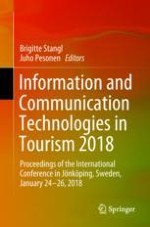2018 | OriginalPaper | Buchkapitel
Factors Influencing Customers’ Intention to Use Instant Messaging to Communicate with Hotels
verfasst von : Soey Sut Ieng Lei, Ksenia Kirillova, Dan Wang
Erschienen in: Information and Communication Technologies in Tourism 2018
Aktivieren Sie unsere intelligente Suche, um passende Fachinhalte oder Patente zu finden.
Wählen Sie Textabschnitte aus um mit Künstlicher Intelligenz passenden Patente zu finden. powered by
Markieren Sie Textabschnitte, um KI-gestützt weitere passende Inhalte zu finden. powered by
